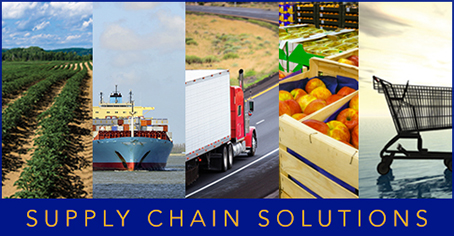Successful management of the perishables supply chain is challenging in the best of times. Add conditions of extreme weather, increasing food safety requirements, shrinking transportation capacity, and more stringent retailer requirements and the challenge grows exponentially. Supply chain professionals must overcome these obstacles daily to ensure fruits and vegetables reach store shelves safely, and at peak freshness.
So how do key participants in the fresh produce supply chain consistently achieve this goal in a cost-efficient manner? We explored this question and more with three industry experts during a rousing roundtable discussion.
Our participants were Mason Brady, director of finance and supply chain at Homegrown Organic Farms in Porterville, CA, which grows and markets certified organic blueberries, citrus, stone fruit, and grapes; Gene Gallant, director of supply chain for Chelsea, MA-based State Garden, Inc., which packs and supplies organic and conventional leafy greens, spinach, and celery hearts; and Doug Grant, executive vice president and chief operations officer for the Oppenheimer Group, headquartered in Vancouver, British Columbia. Oppy partners with 250 growers worldwide to manage marketing, sales, and logistics from farms to retail locations.
The conversation covered a wide variety of topics, including industry change and challenges, supply chain strategy, and talent requirements needed to support the fresh produce demands of foodservice distributors, retailers, and consumers. We also talked about enabling technologies which will be featured as Part Two of this roundtable in the October 2018 issue of Blueprints.
Change and Challenges
The fresh produce industry has been in a continuous state of change for decades. Growers, packers, and shippers are being challenged to provide year-round access to a wider variety of product amid obstacles from field to retail shelf.
How does managing the perishables supply chain differ from 10 or 15 years ago?
Grant: I’ve been in the industry for 23 odd-years and each year is more complex than the last. Every customer seems to have unique requirements now, whether it’s program, business, or logistics requirements. Everyone has stiffer food safety and traceability requirements, and we’ve seen quite an increase in sustainability and social responsibility requests. Add in the wider assortment of pack styles, value-added items, and new product varieties, and we’re dealing with much greater complexity today.



